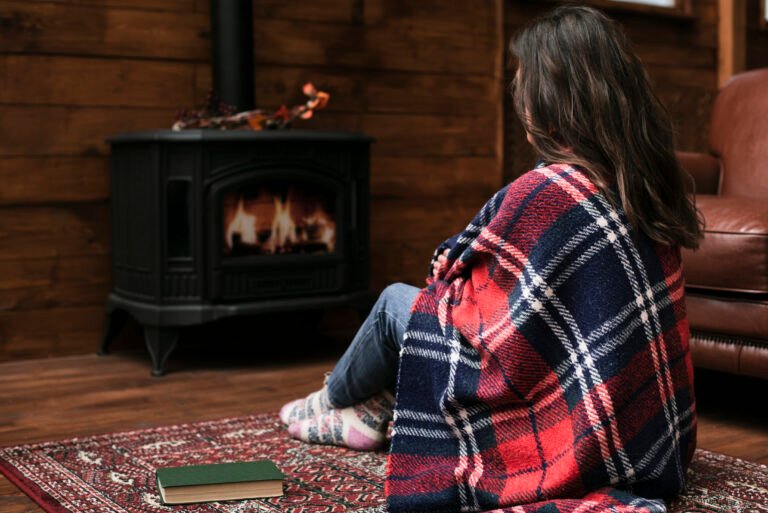Why Reflective Roof Coatings Are Essential for Sustainable Buildings?
Reflective roof coatings are becoming a critical element in sustainable building practices. These coatings are designed to reflect more sunlight and absorb less heat, which helps in maintaining cooler indoor temperatures. As buildings account for a significant portion of energy consumption, especially in warmer climates, adopting reflective roof coatings can drastically reduce the need for air conditioning, thereby lowering energy costs and greenhouse gas emissions.
Beyond the immediate energy savings, reflective roof coatings also extend the lifespan of roofing materials. By minimizing the thermal expansion and contraction that typically damages roofs over time, these coatings help maintain structural integrity for longer periods. This makes them a cost-effective choice and a practical step toward eco-friendly building solutions that contribute to a more sustainable future.
Understanding Reflective Roof Coatings
Reflective roof coatings are a specialized layer applied to the surface of a roof to enhance its ability to reflect sunlight and reduce heat absorption. these coatings are often made from materials such as acrylics, elastomers, or silicone, which are designed to create a reflective surface. by reflecting a significant portion of the sun’s rays, these coatings help keep buildings cooler, especially in regions with intense sunlight and warmer climates.
understanding how reflective roof coatings work is key to appreciating their importance. the coating creates a barrier that prevents the roof from absorbing and storing heat, which helps maintain a more stable and cooler indoor temperature. this not only improves the comfort of occupants but also lowers the need for energy-intensive cooling systems. by addressing this issue at the roof level, reflective coatings play a crucial role in reducing overall energy consumption and promoting sustainability in building practices.
furthermore, these coatings offer additional benefits, such as protecting the roof’s surface from damage caused by UV radiation, moisture, and extreme temperature changes. by reducing thermal expansion and contraction, reflective roof coatings help preserve the roof’s longevity, making them an essential investment for long-term sustainability.
Energy Efficiency Benefits
One of the most significant advantages of reflective roof coatings is their impact on energy efficiency. by reflecting sunlight rather than absorbing it, these coatings help in maintaining cooler indoor temperatures, especially during the hot summer months. this means that buildings with reflective roof coatings require less energy to keep cool, as air conditioning systems don’t have to work as hard to regulate the temperature. the result is a noticeable reduction in electricity consumption, which can lead to lower utility bills.
the energy efficiency benefits don’t stop there. reflective roof coatings also help reduce the urban heat island effect, a phenomenon where urban areas become significantly warmer than their rural surroundings due to the concentration of buildings and concrete absorbing heat. by reflecting more sunlight, reflective roofs contribute to cooling the surrounding environment, further reducing the demand for air conditioning and energy consumption. this is particularly important in densely populated cities, where energy use and heat retention are major concerns.
in addition to saving energy, the lowered demand for air conditioning reduces greenhouse gas emissions. with less energy needed to cool buildings, power plants have a smaller burden, leading to fewer carbon emissions being released into the atmosphere. this makes reflective roof coatings a simple yet effective way to contribute to both individual energy savings and broader environmental sustainability.
Extending the Lifespan of Roofs
Reflective roof coatings do more than just improve energy efficiency; they also play a vital role in extending the lifespan of roofs. constant exposure to the sun’s ultraviolet (UV) rays can cause roofing materials to deteriorate over time, leading to cracks, warping, and other forms of damage. reflective coatings shield the roof from harmful UV radiation, minimizing the wear and tear that typically results from prolonged sun exposure.
thermal cycling, the process where roofing materials expand and contract due to temperature fluctuations, is another factor that contributes to roof degradation. in hot climates, roofs can reach extreme temperatures during the day and cool down significantly at night. this constant expansion and contraction weaken the roofing materials, leading to cracks and leaks. reflective roof coatings help mitigate this by keeping the roof surface cooler and more stable, reducing the stress placed on the materials.
by preventing premature aging and damage, these coatings reduce the need for frequent repairs or early roof replacements, saving property owners both time and money. In essence, investing in reflective roof coatings is not only a sustainable choice but also a smart, long-term financial decision that protects the structural integrity of a building’s roof.
Environmental Impact
The environmental impact of reflective roof coatings is another compelling reason why they are essential for sustainable buildings. By reducing the amount of heat absorbed by roofs, these coatings help decrease the overall energy demand for cooling systems, which directly translates to lower carbon emissions. the less energy a building consumes, the less fossil fuel-based energy is required, leading to a reduction in greenhouse gases released into the atmosphere. this makes reflective roof coatings a simple yet effective tool for combating climate change on a larger scale.
in addition to reducing energy consumption, reflective roof coatings play a role in mitigating the urban heat island effect, which occurs when densely populated areas become significantly warmer than their rural counterparts. the widespread use of dark, heat-absorbing materials in cities contributes to higher temperatures, increased energy use, and poor air quality. by applying reflective coatings, buildings can help cool their surroundings, creating a more balanced and sustainable urban environment. This ripple effect benefits not just individual properties but entire communities, lowering temperatures and energy demands across the board.
moreover, the production and application of reflective roof coatings tend to have a lower environmental footprint compared to the manufacturing of traditional roofing materials. this, combined with the reduction of waste through extending the roof’s lifespan, positions reflective coatings as a sustainable solution that benefits both building owners and the planet.
Cost Savings and Financial Incentives

Reflective roof coatings offer significant cost savings, making them a smart financial investment for property owners. One of the most immediate ways these coatings save money is through reduced energy bills. by reflecting sunlight and reducing the amount of heat that enters the building, air conditioning systems work less, leading to lower electricity consumption. over time, these savings can add up, offsetting the initial cost of installing the reflective coating.
beyond the energy savings, reflective roof coatings also reduce long-term maintenance and repair costs. as they protect the roof from UV damage, thermal expansion, and moisture, the roof remains in better condition for longer periods, reducing the need for frequent repairs or early replacement. this extended lifespan means fewer expenses associated with roof upkeep, further enhancing the financial appeal of reflective coatings.
in many areas, governments and energy companies offer financial incentives for adopting energy-efficient building solutions, including reflective roof coatings. these incentives can come in the form of tax credits, rebates, or subsidies, making it even more affordable for property owners to invest in sustainable building practices. by taking advantage of these programs, property owners can significantly lower the upfront costs, making reflective roof coatings a financially sound choice for both short-term savings and long-term benefits.
Case Studies and Examples
Several case studies highlight the effectiveness of reflective roof coatings in promoting sustainability and cost savings. For instance, in one project conducted in California, a commercial building applied a reflective roof coating to a previously uncoated surface. the results were immediate, with the building’s cooling costs dropping by nearly 20% during the peak summer months. this reduction not only translated to lower utility bills but also less strain on the building’s HVAC system, prolonging its lifespan.
in another example, a residential neighborhood in a hot, urban area adopted reflective coatings for multiple homes. the collective impact of this decision resulted in a measurable decrease in the neighborhood’s overall energy consumption, contributing to lower carbon emissions and a cooler local environment. Additionally, the residents reported fewer issues with roof damage and leaks, demonstrating the long-term durability benefits of reflective coatings.
large-scale case studies, such as municipal buildings or schools, also show how reflective roof coatings contribute to substantial energy savings and enhanced durability. these projects often take advantage of local government incentives and rebates, further improving the cost-effectiveness of reflective roof coatings. these real-world examples underscore the broad application and benefits of reflective roof coatings, proving that they are a vital component in creating sustainable, energy-efficient buildings across various sectors.
In conclusion
Reflective roof coatings are a crucial element in the move toward sustainable building practices, offering a wide range of benefits from energy efficiency and cost savings to environmental impact and roof longevity. By reflecting sunlight and reducing heat absorption, these coatings lower cooling costs, extend the lifespan of roofs and contribute to the reduction of greenhouse gas emissions. With financial incentives available and proven success in real-world applications, reflective roof coatings are a smart, eco-friendly investment for both commercial and residential properties. As sustainable building practices continue to evolve, reflective roof coatings will undoubtedly remain a key strategy in reducing energy consumption and creating greener, more durable structures.
FAQs
What are reflective roof coatings?
Reflective roof coatings are specialized materials applied to roofs that reflect sunlight and reduce heat absorption. They help keep buildings cooler by bouncing the sun’s rays away from the roof, which improves energy efficiency.
How do reflective roof coatings contribute to energy efficiency?
By reflecting sunlight, these coatings reduce the amount of heat that enters a building. This lowers the need for air conditioning, especially during hot weather, which saves energy and reduces electricity bills.
Can reflective roof coatings help extend the life of my roof?
Yes, they can. Reflective coatings protect the roof from UV damage and reduce thermal expansion, which prevents cracking and warping. This protection extends the life of your roof, meaning fewer repairs and replacements over time.
Are reflective roof coatings good for the environment?
Absolutely. By reducing energy consumption, reflective roof coatings help lower greenhouse gas emissions. They also play a role in reducing the urban heat island effect, making cities cooler and more sustainable.







